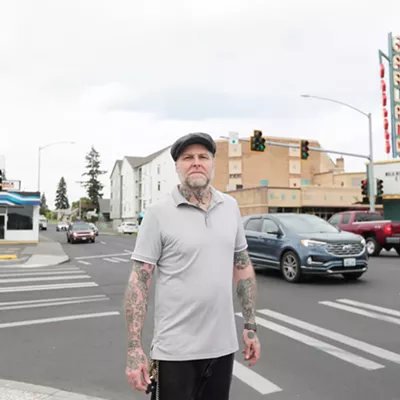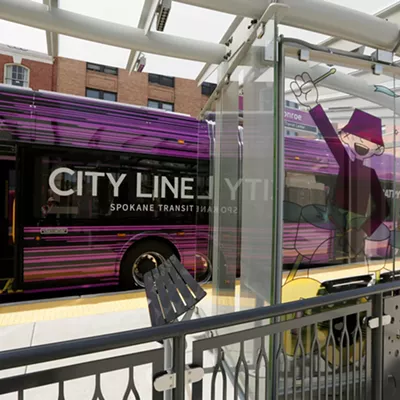If you have lived for any period of time in Eastern Washington or North Idaho, you know that we live in a wonderful place. Like me, you've probably wondered when the rest of the world would find our hidden jewels. We just never imagined it would be the New York Times, when it recently highlighted Spokane under the headline "The Next Affordable City Is Already Too Expensive." Attainable housing was perhaps the most precious of those jewels and what set us apart from most large cities in the West.
Over the past 10 years, we've taken housing affordability for granted. We thought it was a staple that we would never lose. In 2010, the median home price was about $160,000 — and we were worried about it going down. Of course we were going to be discovered.
As the growth in the region started to escalate, the first signs of price increases were welcomed as a sign the economy had finally turned the corner following the Great Recession. The trickle of growth turned into a stream, then surged into a COVID migration-swollen river. The regional growth rate is now well over 2 percent a year, while the median home price is nearly $400,000. This rapid price escalation is a result of our complacency and a failure to build enough housing to accommodate our population.
The mayor of Spokane has now declared a "housing crisis," but it's not a crisis for everyone. If you own a home, you've seen its value increase rapidly. A 2,000-square-foot home on the South Hill that a family bought for $250,000 several years ago is now worth $800,000.
But the windfall profits that benefit existing homeowners come at a cost. The price is paid by the young family that cannot find a home they can afford, and by the family that was displaced when the rent increased by $400 per month. The housing "crisis" has exacerbated housing inequality and is taking a heavy toll on families across the region. We all know someone who is resigned to the reality that they may never own a home.
Our growth over the past 10 year has transformed where we build new housing. Ten years ago, the city of Spokane accounted for more than 40 percent of the new home construction in the region. Today it accounts for less than 15 percent.
This is largely due to a decreasing supply of raw land, along with a development code that systematically discourages infill development. Growth has migrated at an increasing pace to outlying unincorporated areas, and to small cities in Spokane and Kootenai counties. It should be alarming to Spokane that more than 50 percent of new housing construction is occurring in Kootenai County. Post Falls is growing at a rate of 4 percent annually. The impact of this shift in growth patterns will have significant impacts on tax base, traffic and sprawl. Once these growth patterns take hold, they are very difficult to reverse.
Understanding what is happening is the easy part. Addressing the problem is far more complex. We need to allow a wide variety of housing types in every neighborhood. When you look around Spokane, what you see are single family homes on large lots, along with large multifamily projects. There is virtually nothing in between.
I'm often asked, why do we not have small patio homes? Why are there no condominiums and townhomes? Why do we need to build so many large apartment projects? The answer to all of these questions is that home builders and developers build what development codes permit.
The Spokane development code makes it very difficult to build anything but large homes on large lots and restricts all multifamily development to segregated high-density zoning districts.
People love Kendall Yards and the wide variety of housing, all integrated on a single street and neighborhood. The mayor has said she wants more development like Kendall Yards. If that's what you want, then you need a development code that both allows and encourages it. We spent the last decade with innumerable "infill housing committees" and "housing action plans" but no significant regulatory change.
The result is Spokane's declining housing market share and skyrocketing home prices.
Outside of the city of Spokane, there is reason for some optimism. Spokane County reformed its housing regulations for low-density residential zones and now permits townhomes and small multifamily buildings alongside single family homes. The county also has a very well thought out "Mixed-Use" zone that encourages walkable neighborhoods. Liberty Lake has what it calls a "Specific Area Plan" process that allows a developer to establish flexible development standards over a controlled area. This has been successfully used allowing a wide range of housing products in a single neighborhood.
We cannot accept being a community where housing is too expensive for the families living here. How we build neighborhoods and regulate housing has to change in ways that encourage infill. Regardless of economic status, families need to be welcomed into all of our neighborhoods. Families have the right to attainable housing and to be able to choose where they live. The barriers to attainable housing and economically diverse neighborhoods need to be removed. ♦
Jim Frank is the founder of Greenstone Homes, which has been building homes since 1980, including in mixed-use developments like Kendall Yards and Liberty Lake's River District.




















